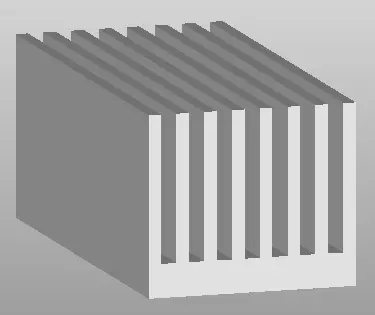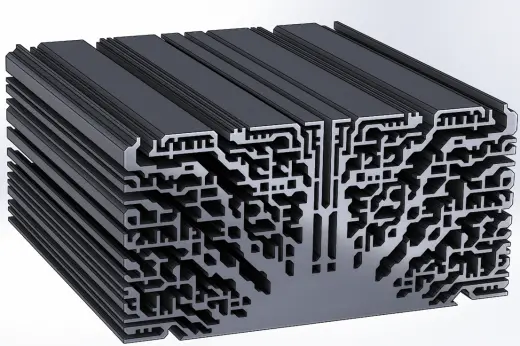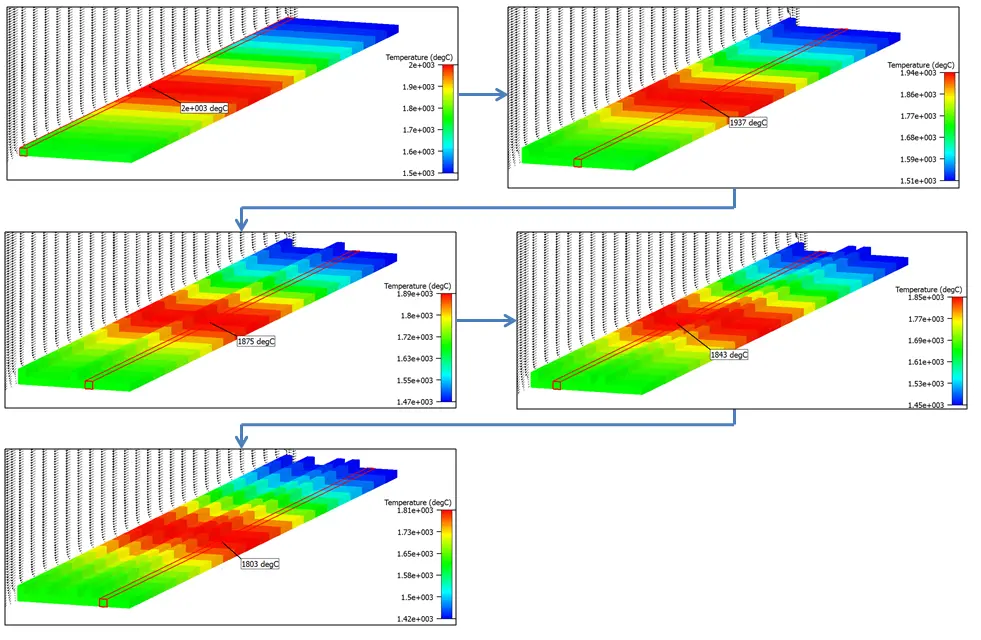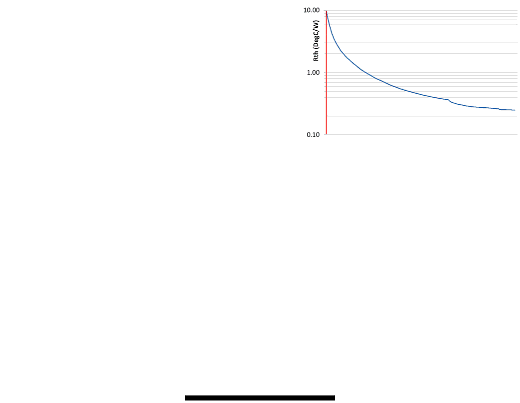
More specifically, how could you use simulation to identify an arbitrary heatsink topology that is thermally efficient?
The/an answer turned out to be very simple:
- Start with a minimal section of heatsink base, a thin sliver.
- Simulate to see how hot it gets
- Where its surface is hottest ‘grow’ the geometry there by a very small amount
- GoTo 2
- Repeat until a design space has been filled
We applied this novel process to a forced convection cooled environment and chose a full length ‘rod’ shape as the ‘very small amount of geometry’ with which to grow the heatsink. Here are the first 5 steps of the additive design method (simulated with FloTHERM of course!):
Each time the heatsink geometry ‘grows’, its thermal efficiency improves, the temperatures drop. That’s the intention of increasing the surface area at the hottest point, the point at which heat is bursting to get out. By growing the geometry at that point the thermal bottleneck is relieved, bit by bit.
To visualize the rest of the growth we change to a 2D front view and animate the sequential additions. A graph also shows the gradual improvement in thermal performance, a decrease in the heatsink thermal resistance, calculated as ((Base center temperature – ambient temperature) / Power):
We’ve already introduced organic words such as ‘growth’ and it’s evident that the heatsink bears more than a passing resemblance to a type of tree. Shoots are going up, they branch so as to enter more of the design space volume. If this first year of growth sees the heatsink establishing its main canopy, then subsequent years will see the formation of a trunk and thickened branches. 
If you can’t wait then check out the recently published Semitherm 31 paper “An Additive Design Heatsink Geometry Topology Identification and Optimisation Algorithm. Robin Bornoff, John Parry, Mentor Graphics, UK” which should be on IEEE Xplore in the near future. It also won 3rd best paper at Semitherm! Yay
Manufacturing is changing, so must design.
24th March 2015, Ross-on-Wye







